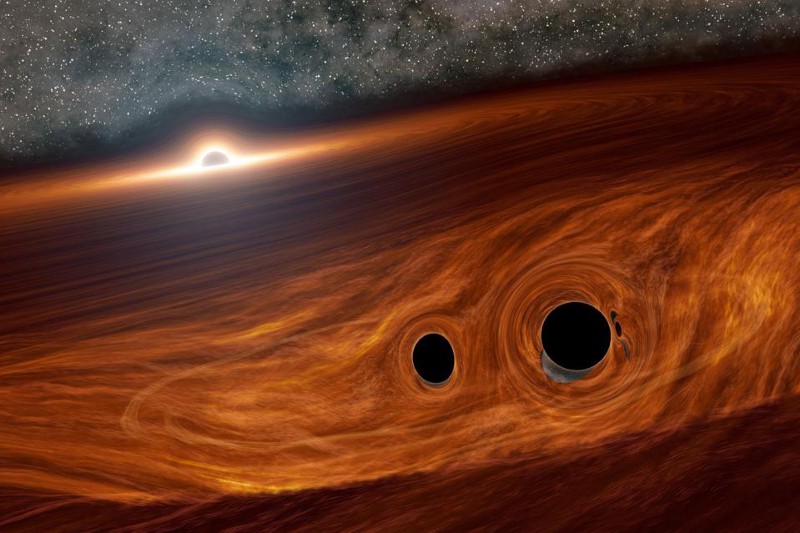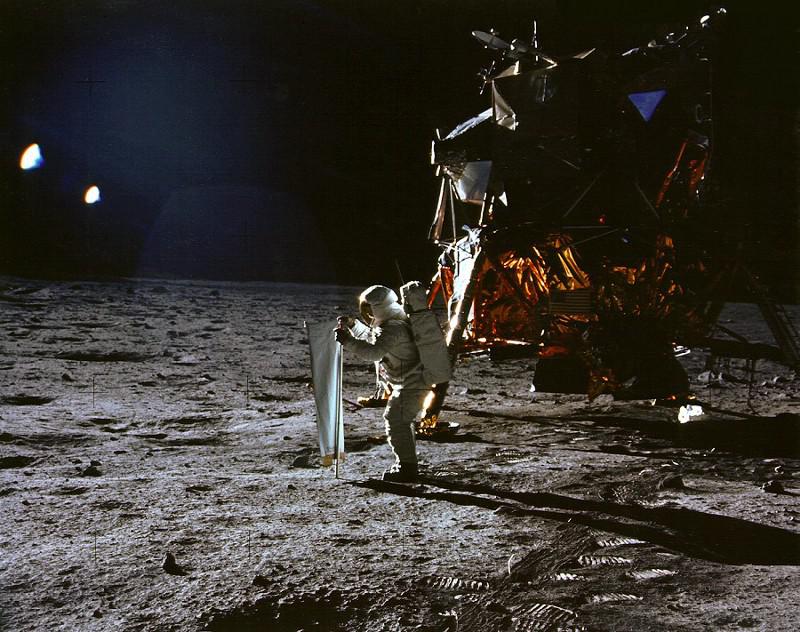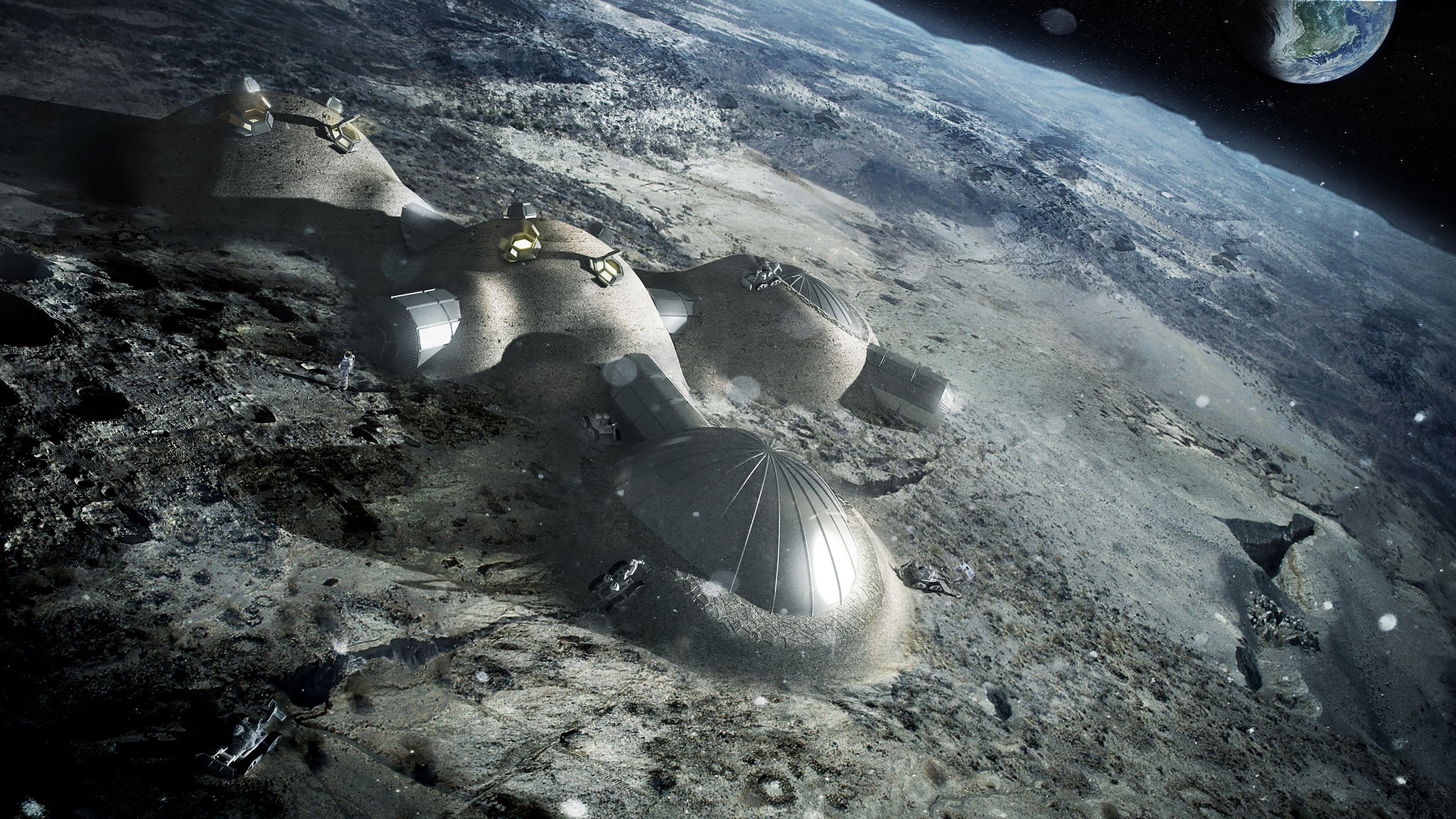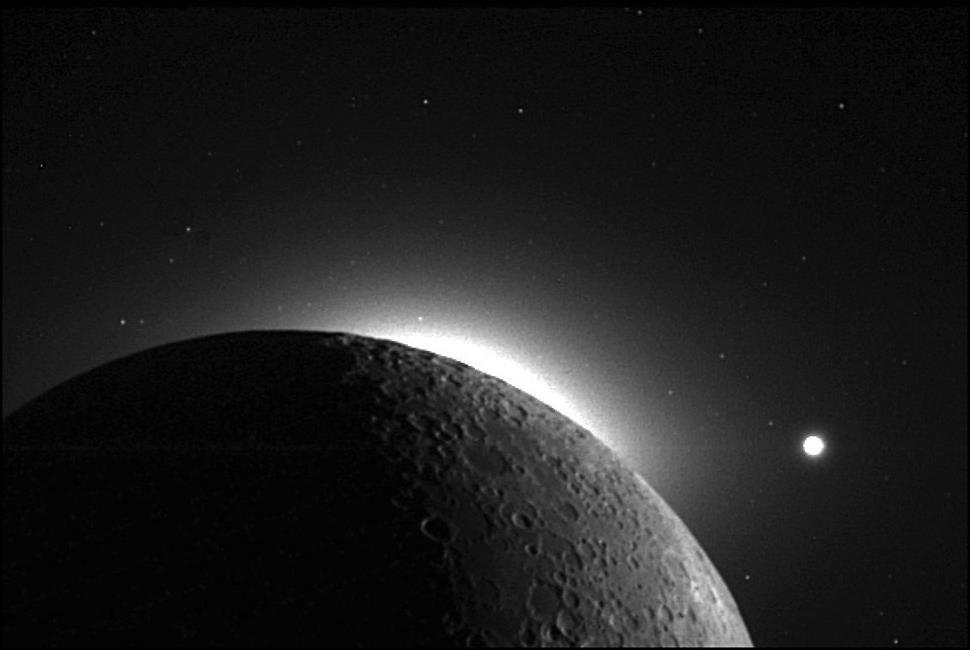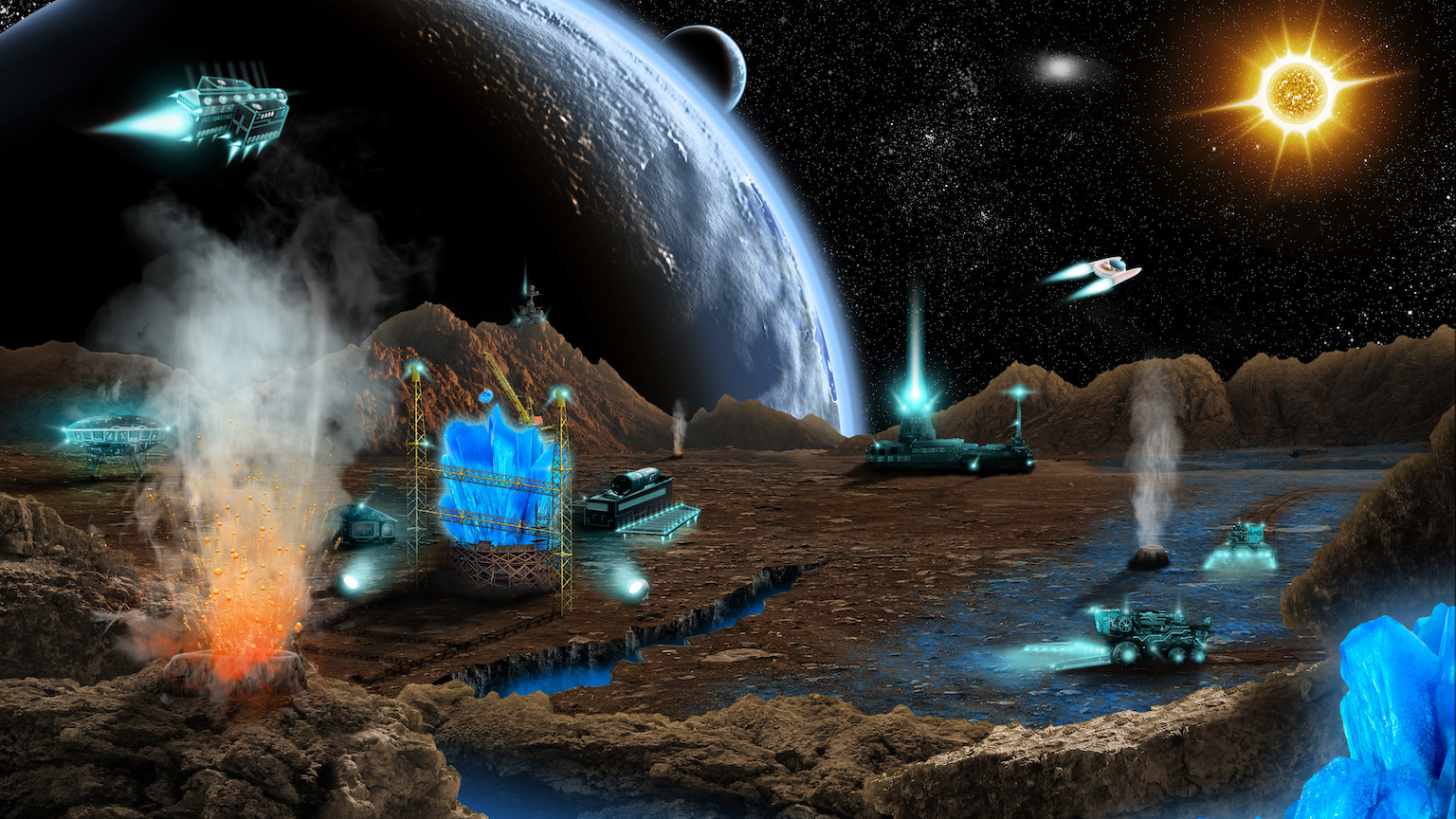Using the Moon as a gravitational wave detector to study the origin of the Universe
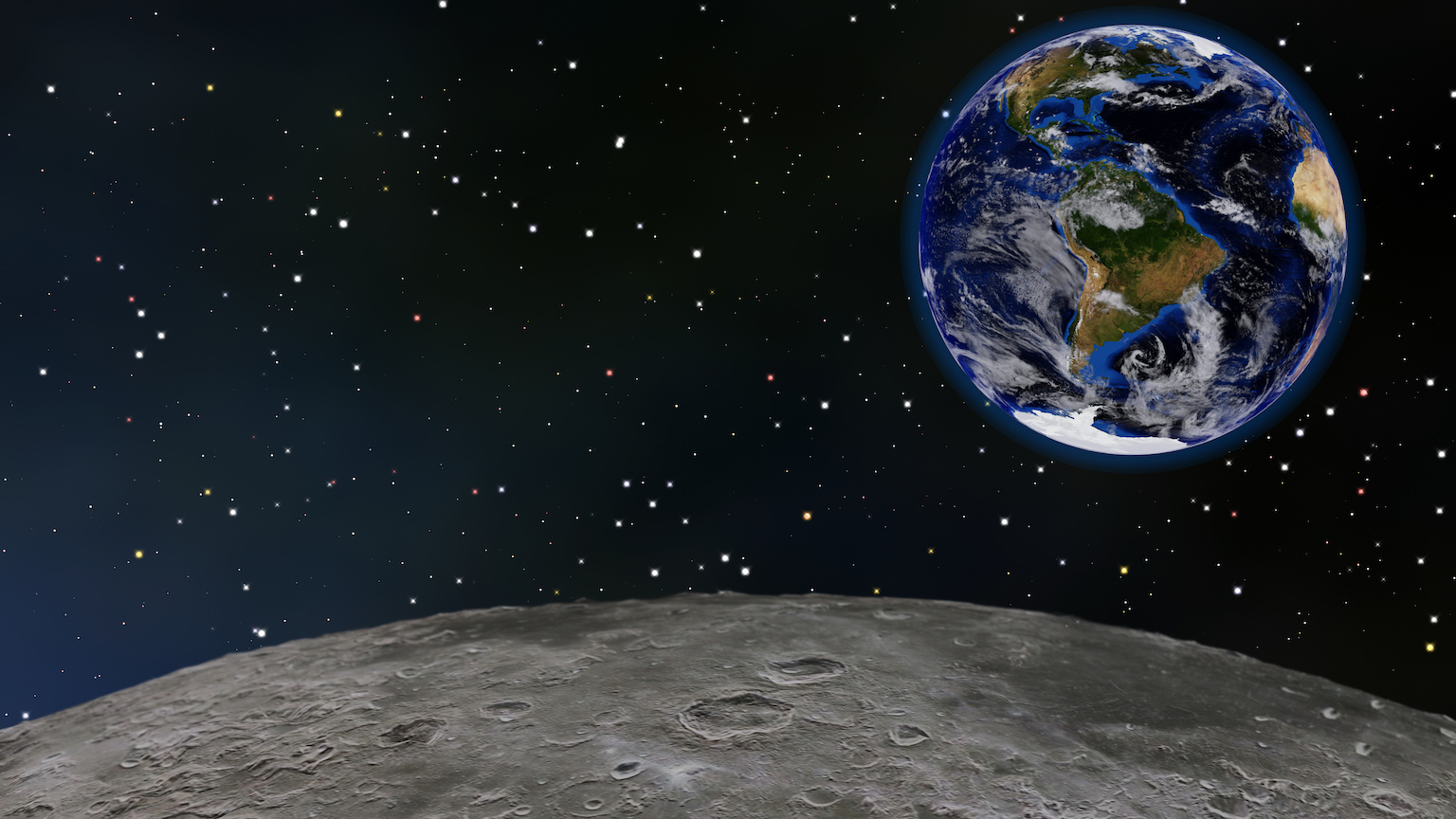
- Gravity wave astronomy is the new frontier in astrophysics and cosmology.
- Certain gravitational waves — ripples in the fabric of spacetime — may reveal the moment when the Universe cooled from a hot broth of energy into the particles and forces we know today.
- To detect them, physicists propose to harness the Moon as a detector.
Over the past century, a succession of newly invented telescopes has given us an expanding set of eyes to capture the past light of the heavens in order to piece together the history of the Universe. Today, we are just beginning to bring an entirely new class of telescopes into the game: gravity telescopes, which measure waves in the fabric of spacetime itself. These telescopes are extraordinarily difficult and expensive to build. And a bold new paper proposes that in lieu of building a Herculean gravity telescope, we should use the Moon to peer into the origins of the Universe.
Astrophysics and cosmology are entirely founded upon observations of the Universe made by telescopes detecting waves from distant objects. X-ray telescopes detect black holes and spinning neutron stars sweeping space with ferocious high energy beams (pulsars). Ultraviolet and visible waves reveal the stellar life cycle and the expansion of the Universe. Instruments like Hubble create infrared photographs to peer deeply into nebulae and pick out hot exoplanets. Microwave light reveals the age of the Universe. These measurements sample a vast spectrum of electromagnetic waves, all of which possesses the same underlying structure.
Gravitational waves
Gravitational wave (GW) astronomy measures ripples in spacetime itself. Unlike most of the electromagnetic astronomy fields, GW astronomy is extremely young.
The first gravity waves were detected in 2015. They were produced by the inspiral, merger, and ringdown of two black holes colliding a billion years ago. The disturbance in spacetime that reached Earth from this GW was only about one-thousandth the width of a proton, and yet the Laser Interferometer Gravitational-Wave Observatory (LIGO) was able to see it. This astounding achievement immediately won the Nobel Prize in Physics.
Not all gravitational waves are the same
That first discovery is only the tip of the iceberg. Gravitational waves of varying frequencies, magnitudes, and forms ripple throughout the Universe. Just as a range of processes emit signals throughout the electromagnetic spectrum, a wide range of astrophysical and cosmological phenomena produce varying GW spectrum signatures. Here we come to a new paper published last week in the highly respected physics journal Physical Review Letters. (You can read a free version here.)
The paper points out that a particular GW frequency band — roughly a microhertz (or one wave peak per one million seconds) — can be used, among other things, to constrain something called stochastic gravitational wave background. This is the background noise of GW signals, made of faint, random waves of various types, all jumbled together. It is like the static sound of a detuned radio or the flickering gray snow picture on an analog TV with no input signal.
Measuring the level of this GW background noise may allow cosmologists to see something called cosmological first-order phase transitions. In the very early history of the Universe (when it was much less than one second old), so much energy was contained in such a small volume that the particles and forces that we know today could not yet exist. One or more phase transitions could have occurred as the Universe cooled and expanded, enough for the particles that we know today to condense out and cool down — like water droplets condensing from misty air. The newly formed particles then began to interact under the guidelines of the four fundamental forces upon which the modern Universe seems to be governed.
The passage of this GW background noise can be detected in very small deviations in the orbits of celestial bodies. The paper proposes three sets of orbiting bodies that can be probed to analyze the GW signals they are looking for. This is where the Moon figures in, as well as an interesting satellite that you’ve probably never heard of.
Retroreflection
To measure the distance to a celestial object, scientists can fire a laser pulse up from the Earth’s surface out into space. The photons emitted by the laser travel in a straight line at the speed of light until they hit something. If a photon is reflected directly back, we can measure the time of the round trip: divide this time by c and you have the distance traveled. Divide again in half, and this is the distance to the celestial object. It happens that we have placed special reflectors made just for this purpose on two bodies orbiting Earth: the Moon and the satellite LAGEOS.
The moon hosts five reflectors, placed by Apollo astronauts and two Soviet unmanned landers. These are retroreflectors, specifically designed and carefully machined to reflect light back along the exact same direction from whence it came. A trip to the Moon that took an astronaut three days takes a photon a bit more than one second. Using these retroreflectors, the Earth-Moon distance has been continuously measured to within less than one inch(!) for 50 years.
LAGEOS is a man-made sphere launched into orbit in the 1970s, its surface bejeweled with 426 retroreflectors. It is an extremely simple satellite, requiring neither moving parts, nor power source, nor communication. LAGEOS’ only job is to retroreflect.
The paper predicts that if the Moon’s distance from Earth can be measured to within about 0.1 mm (four-one-thousandths of an inch), then we may be able to see fluctuations that can reveal the GW noise background of the cooling Universe. The authors believe that the measurement is likely possible with today’s technology. A similar analysis may be possible with LAGEOS.
A recent proposal for a new telescope capable of the same measurement suggests a constellation of six spacecraft parked hundreds of millions of miles apart. But why build it when we’ve got the Moon?
